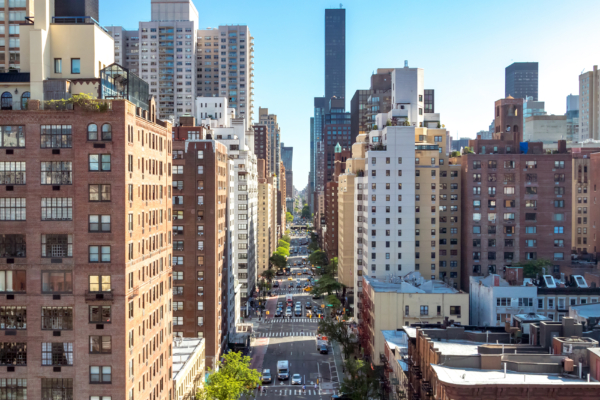New York City’s median apartment rent has soared to a historic high of $4,700 by the end of June 2025, marking a 6.6% increase from the same period last year, according to the latest report released by the real estate website RentHop. The analysis indicates that the rent hikes are primarily concentrated in areas surrounding subway stations, influenced by new construction projects.
Data reveals that as of June 2025, 87% of the neighborhoods surrounding subway stations in the city (totaling 412 stations) have experienced rent increases, showing a further expansion from the previous year’s 84%. The report highlights that the convenience of being near the subway has seen an increased impact on housing demand following the implementation of congestion pricing policies. In the first half of 2025, subway ridership has increased by 7% compared to the same period last year, suggesting a shift towards public transportation as people seek to avoid additional congestion fees.
One of the areas with the largest rent increases is around the Steinway St subway station in Astoria, Queens. Serviced by the E, M, and R lines, the median rent for apartments in the vicinity has risen from $2,625 in 2024 to $3,000 in 2025, marking a 14.29% annual increase. Luxury residential projects in the area, such as “Hearthstone” which began leasing in October 2024 at around $3,000, showcase that new development rents significantly exceed the neighborhood average.
Significant rent hikes have also been observed in the vicinity of the 183rd St subway station in the Bronx. Servicing the 4 train, the residential rent surrounding the station has increased from $1,995 last year to $2,278, representing a 14.19% annual increase.
The report emphasizes another key factor driving rent increases, which stems from the recent surge in new construction deliveries. Some developers are rushing to complete projects before the June 15, 2026 deadline for the “421a tax abatement clause,” accelerating project timelines and resulting in a majority of the new residential supply in the market being higher-priced new homes. These new buildings are often located in outlying areas, equipped with full amenities, and commanding rents higher than the historical average of the neighborhood.
Moreover, according to analysis from the real estate company Corcoran Group, the overall housing market supply remains tight. Available rental listings in Manhattan have decreased by 23% compared to the same period last year, indicating a continued low vacancy rate. This phenomenon is partially attributed to landlords adjusting strategies in response to the Fair and Reasonable Exemption (FARE) Act, Introduction 360-A, causing some properties to temporarily withdraw from the market and further exacerbating the supply shortage.
With more projects expected to be completed before the expiration of the “421a” clause, authorities currently allow developers unable to deliver on time to apply for an extension until 2031. The report suggests that amidst development pressures, transportation policies, and market demands, the housing market pressure in New York City is forecasted to persist into 2026.
For more details, you can access the full report through the link provided: [Report Link](https://tinyurl.com/5n95t37k)

